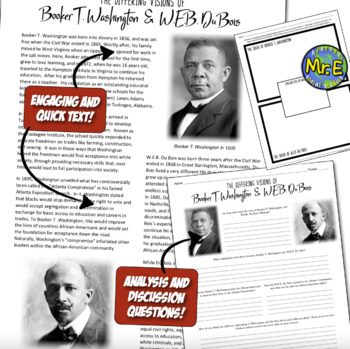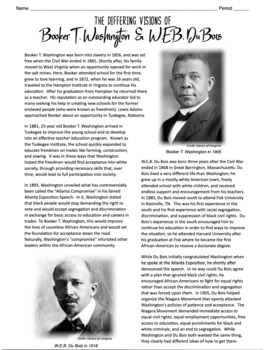Booker T. Washington, W.E.B. Du Bois, the Atlanta Compromise, & Niagara Movement
- Zip
- Google Apps™

What educators are saying
Description
In this Booker T Washington and W.E.B. Du Bois comparison activity lesson, students learn about the background of civil rights leaders Booker T. Washington and W.E.B. Du Bois to understand how these two men were similar and how they differed. Students also learn about Washington's Atlantia Compromise and Du Bois's Niagara Movement, and how each wanted the same end goal of equal civil rights for African-Americans, yet offered different paths to achieve them.
This activity is included in my Progressive Era and Gilded Age Unit Bundle located here!
Students learn about Washington's Atlanta Compromise as well as W.E.B. Du Bois's opposing views in the Niagara Movement. Included are an engaging student text, overarching analytical questions that promote outstanding discussion and debate, and two letters for students to take a stance on whose path was best.
A full key and a Google 1:1 version are included!





